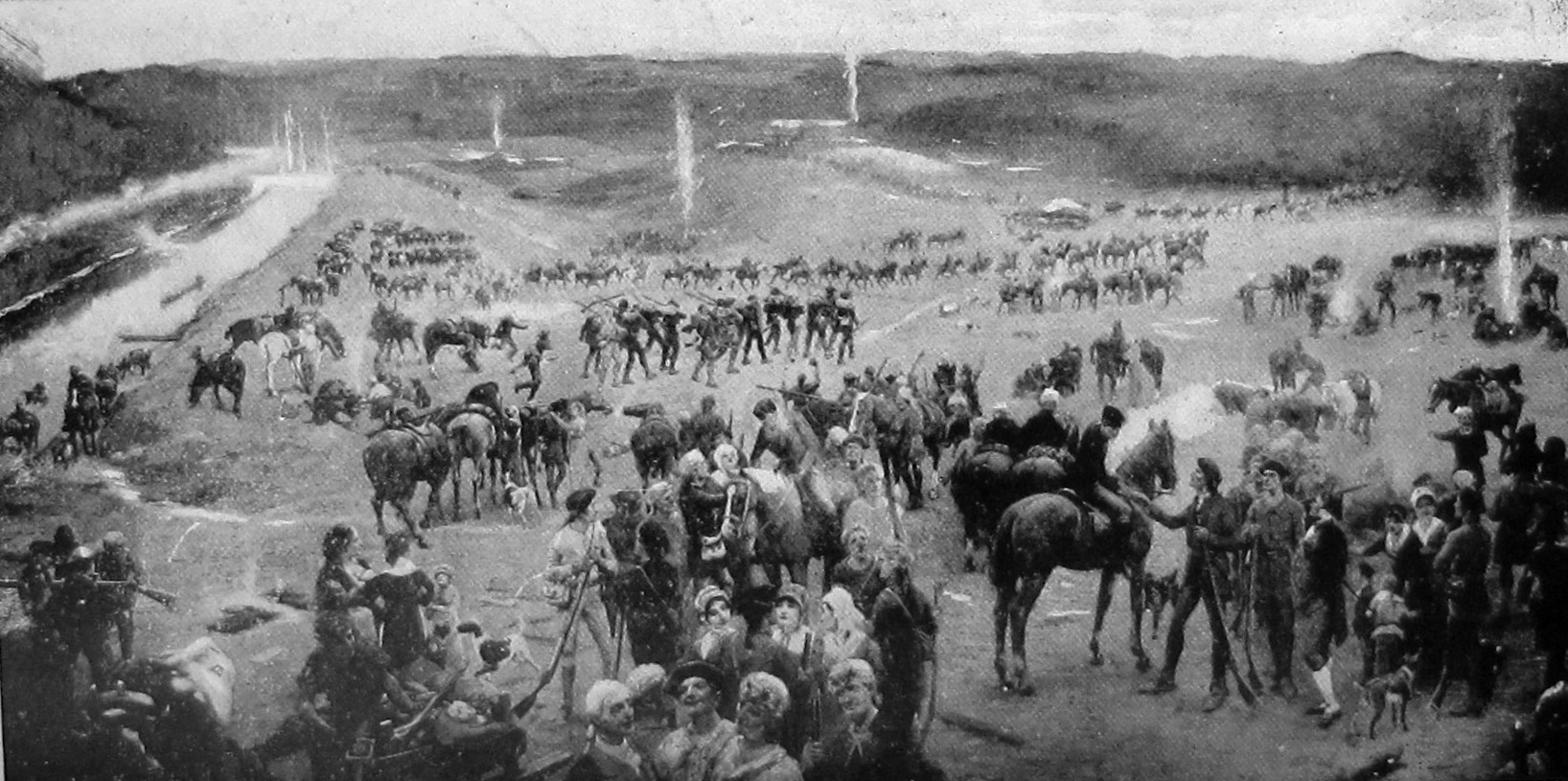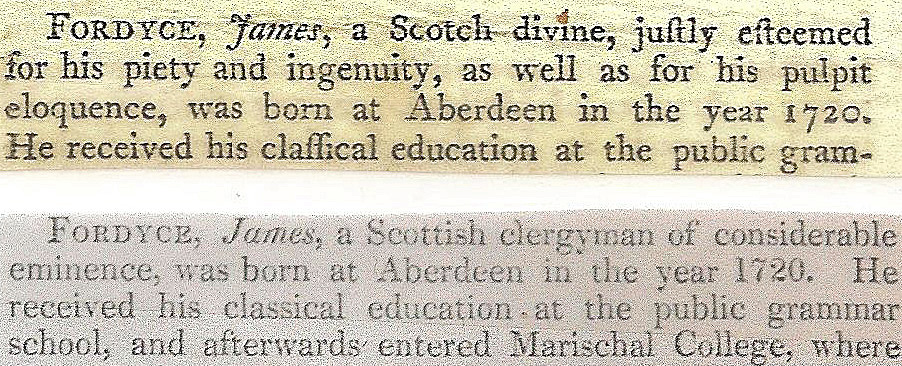|
Campbell County, Virginia
Campbell County is a United States county situated in the south central part of the Commonwealth of Virginia. Located in the Piedmont region of Virginia, Campbell borders the Blue Ridge Mountains. The county seat is Rustburg. Grounded on a tobacco cash crop economy, Campbell County was created in 1782 from part of Bedford County. The county was named in honor of General William Campbell, hero of the American Revolutionary War. Campbell County is part of the Lynchburg, VA Metropolitan Statistical Area. At the 2020 census, the county population was 55,696. The number of residents has grown steadily in every census after 1930, and the total population has more than doubled since that time. Lynchburg was established in Campbell County in 1786, incorporated as a town in 1805, and separated from Campbell County when it became an independent city in 1852. Lynchburg has annexed additional land from Bedford County and Campbell County through the years, most recently in 1976. ... [...More Info...] [...Related Items...] OR: [Wikipedia] [Google] [Baidu] |
William Campbell (general)
William Campbell (born 1745 and died on August 22, 1781) was a Virginia farmer, pioneer, and soldier. One of the thirteen signers of the earliest statement of armed resistance to the British Crown in the Thirteen Colonies, the Fincastle Resolutions, Campbell represented Hanover County in the Virginia House of Delegates. A militia leader during the American Revolutionary War, he was known to Loyalists as the "bloody tyrant of Washington County", but to the Patriots he was known for his leadership at the Battle of Kings Mountain and the Battle of Guilford Courthouse. Civic and military leader In 1775, Campbell was one of the thirteen signers of the Fincastle Resolutions, the earliest statement of armed resistance to the British Crown in the Thirteen Colonies. Campbell represented Hanover County, Virginia in the Virginia House of Delegates twice: in 1780, and again in 1781 (the year that he died). He was a militia leader of the American Revolutionary War, known for harsh treat ... [...More Info...] [...Related Items...] OR: [Wikipedia] [Google] [Baidu] |
Monacan Indian Nation
The Monacan Indian Nation is one of eleven Native American tribes recognized since the late 20th century by the U.S. state of Virginia. In January 2018, the United States Congress passed an act to provide federal recognition as tribes to the Monacan and five other tribes in Virginia. They had earlier been so disrupted by land loss, warfare, intermarriage, and discrimination that the main society believed they no longer were "Indians". However, the Monacan reorganized and asserted their culture.Vincent Schilling, "Six VA Tribes Slotted For Federal Recognition as Senators Warner & Kaine Secure Bill Passage" ''Indian Country Media Network'', January 16, 20 ... [...More Info...] [...Related Items...] OR: [Wikipedia] [Google] [Baidu] |
Altavista, Virginia
Altavista is an incorporated town in Campbell County, Virginia, United States. The population was 3,450 at the 2010 census. It is part of the Lynchburg Metropolitan Statistical Area. History A new town on a new railroad The town of Altavista was created in 1905 during the construction of the east-west Tidewater Railway between Giles County (on the border with West Virginia) and Sewell's Point in what was at the time Norfolk County. Planned by Campbell County native William Nelson Page and financier and industrialist Henry Huttleston Rogers, the Tidewater Railway was combined with the Deepwater Railway in West Virginia to form the new Virginian Railway in 1907. Although it was a common carrier and offered limited passenger service until 1956, the main purpose of the Virginian Railway was to haul bituminous coal from the mountains to coal piers on the ice-free harbor of Hampton Roads. Lane Brothers Construction Company was the contractor for constructing of the Tidewater Rail ... [...More Info...] [...Related Items...] OR: [Wikipedia] [Google] [Baidu] |
Sanborn Fire Insurance Map From Altavista, Campbell County, Virginia
Sanborn may refer to: Places In the United States: *Sanborn, California *Sanborn, Iowa *Sanborn, Minnesota *Sanborn, Nebraska *Sanborn, New York *Sanborn, North Dakota *Sanborn, Ashland County, Wisconsin, a town *Sanborn (community), Wisconsin, an unincorporated community *Sanborn County, South Dakota *Lake Sanborn, a lake in Minnesota *Sanborn Township, Michigan Other uses *Sanborn (surname) *Sanborn maps, maps of U.S. cities and towns in the 19th and 20th centuries, published by The Sanborn Map Company *Grupo Sanborns Grupo Sanborns is a retailing arm of the Carlos Slim-run Grupo Carso that includes the namesake Sanborns chain, Mixup music stores, iShop electronics stores, Saks Fifth Avenue and Sears department stores in Mexico, and other formats. The nam ..., a large restaurant chain in Mexico, owned by business magnate Carlos Slim Helú See also * Sandbourne {{disambiguation, geo ... [...More Info...] [...Related Items...] OR: [Wikipedia] [Google] [Baidu] |
Map Of Campbell Co
A map is a symbolic depiction emphasizing relationships between elements of some space, such as objects, regions, or themes. Many maps are static, fixed to paper or some other durable medium, while others are dynamic or interactive. Although most commonly used to depict geography, maps may represent any space, real or fictional, without regard to context or scale, such as in brain mapping, DNA mapping, or computer network topology mapping. The space being mapped may be two dimensional, such as the surface of the earth, three dimensional, such as the interior of the earth, or even more abstract spaces of any dimension, such as arise in modeling phenomena having many independent variables. Although the earliest maps known are of the heavens, geographic maps of territory have a very long tradition and exist from ancient times. The word "map" comes from the , wherein ''mappa'' meant 'napkin' or 'cloth' and ''mundi'' 'the world'. Thus, "map" became a shortened term referring to ... [...More Info...] [...Related Items...] OR: [Wikipedia] [Google] [Baidu] |
Battle Of Kings Mountain
The Battle of Kings Mountain was a military engagement between Patriot and Loyalist militias in South Carolina during the Southern Campaign of the American Revolutionary War, resulting in a decisive victory for the Patriots. The battle took place on October 7, 1780, south of the present-day town of Kings Mountain, North Carolina. In what is now rural Cherokee County, South Carolina, the Patriot militia defeated the Loyalist militia commanded by British Major Patrick Ferguson of the 71st Foot. The battle has been described as "the war's largest all-American fight". Ferguson had arrived in North Carolina in early September 1780 to recruit troops for the Loyalist militia and protect the flank of Lord Cornwallis's main force. Ferguson challenged Patriot militias to lay down their arms or suffer the consequences. In response, the Patriot militias led by Benjamin Cleveland, James Johnston, William Campbell, John Sevier, Joseph McDowell and Isaac Shelby rallied to attack Fergu ... [...More Info...] [...Related Items...] OR: [Wikipedia] [Google] [Baidu] |
American Revolution
The American Revolution was an ideological and political revolution that occurred in British America between 1765 and 1791. The Americans in the Thirteen Colonies formed independent states that defeated the British in the American Revolutionary War (1775–1783), gaining independence from the British Crown and establishing the United States of America as the first nation-state founded on Enlightenment principles of liberal democracy. American colonists objected to being taxed by the Parliament of Great Britain, a body in which they had no direct representation. Before the 1760s, Britain's American colonies had enjoyed a high level of autonomy in their internal affairs, which were locally governed by colonial legislatures. During the 1760s, however, the British Parliament passed a number of acts that were intended to bring the American colonies under more direct rule from the British metropole and increasingly intertwine the economies of the colonies with those of Brit ... [...More Info...] [...Related Items...] OR: [Wikipedia] [Google] [Baidu] |
Presbyterians
Presbyterianism is a part of the Reformed tradition within Protestantism that broke from the Roman Catholic Church in Scotland by John Knox, who was a priest at St. Giles Cathedral (Church of Scotland). Presbyterian churches derive their name from the presbyterian form of church government by representative assemblies of elders. Many Reformed churches are organised this way, but the word ''Presbyterian'', when capitalized, is often applied to churches that trace their roots to the Church of Scotland or to English Dissenter groups that formed during the English Civil War. Presbyterian theology typically emphasizes the sovereignty of God, the authority of the Scriptures, and the necessity of grace through faith in Christ. Presbyterian church government was ensured in Scotland by the Acts of Union in 1707, which created the Kingdom of Great Britain. In fact, most Presbyterians found in England can trace a Scottish connection, and the Presbyterian denomination was also t ... [...More Info...] [...Related Items...] OR: [Wikipedia] [Google] [Baidu] |
Scotch-Irish American
Scotch-Irish (or Scots-Irish) Americans are American descendants of Ulster Protestants who emigrated from Ulster in northern Ireland to America during the 18th and 19th centuries, whose ancestors had originally migrated to Ireland mainly from the Scottish Lowlands and Northern England in the 17th century. In the 2017 American Community Survey, 5.39 million (1.7% of the population) reported Scottish ancestry, an additional 3 million (0.9% of the population) identified more specifically with Scotch-Irish ancestry, and many people who claim "American ancestry" may actually be of Scotch-Irish ancestry. The term ''Scotch-Irish'' is used primarily in the United States,Leyburn 1962, p. 327. with people in Great Britain or Ireland who are of a similar ancestry identifying as Ulster Scots people. Many left for America but over 100,000 Scottish Presbyterians still lived in Ulster in 1700. Many English-born settlers of this period were also Presbyterians. When King Charles I attempte ... [...More Info...] [...Related Items...] OR: [Wikipedia] [Google] [Baidu] |
Presbyterianism
Presbyterianism is a part of the Reformed tradition within Protestantism that broke from the Roman Catholic Church in Scotland by John Knox, who was a priest at St. Giles Cathedral (Church of Scotland). Presbyterian churches derive their name from the presbyterian form of church government by representative assemblies of elders. Many Reformed churches are organised this way, but the word ''Presbyterian'', when capitalized, is often applied to churches that trace their roots to the Church of Scotland or to English Dissenter groups that formed during the English Civil War. Presbyterian theology typically emphasizes the sovereignty of God, the authority of the Scriptures, and the necessity of grace through faith in Christ. Presbyterian church government was ensured in Scotland by the Acts of Union in 1707, which created the Kingdom of Great Britain. In fact, most Presbyterians found in England can trace a Scottish connection, and the Presbyterian denomination was also t ... [...More Info...] [...Related Items...] OR: [Wikipedia] [Google] [Baidu] |
Scotch-Irish Americans
Scotch-Irish (or Scots-Irish) Americans are American descendants of Ulster Protestants who emigrated from Ulster in northern Ireland to America during the 18th and 19th centuries, whose ancestors had originally migrated to Ireland mainly from the Scottish Lowlands and Northern England in the 17th century. In the 2017 American Community Survey, 5.39 million (1.7% of the population) reported Scottish ancestry, an additional 3 million (0.9% of the population) identified more specifically with Scotch-Irish ancestry, and many people who claim " American ancestry" may actually be of Scotch-Irish ancestry. The term ''Scotch-Irish'' is used primarily in the United States,Leyburn 1962, p. 327. with people in Great Britain or Ireland who are of a similar ancestry identifying as Ulster Scots people. Many left for America but over 100,000 Scottish Presbyterians still lived in Ulster in 1700. Many English-born settlers of this period were also Presbyterians. When King Charles I atte ... [...More Info...] [...Related Items...] OR: [Wikipedia] [Google] [Baidu] |





